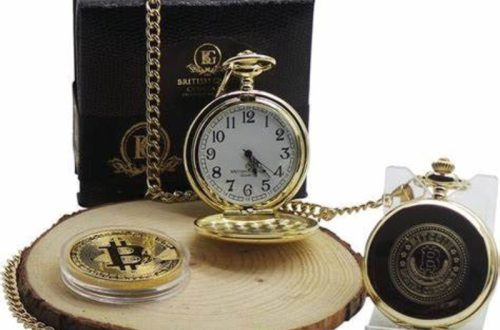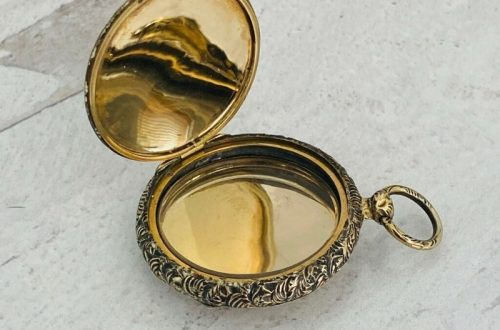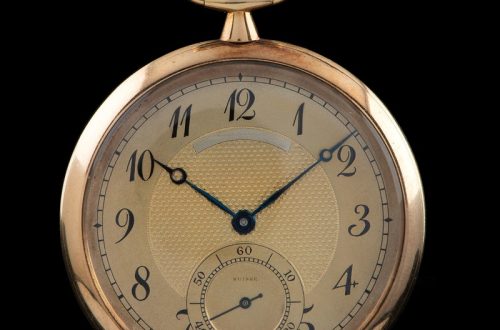The History of Pocket Watches
Before exploring the resurgence of pocket watch mechanical designs, let’s delve into their rich history. Pocket watches have long been a symbol of elegance and precision in timekeeping. They hark back to an era where craftsmanship was paramount and a timepiece was a treasure passed down through generations.
The Origin and Evolution of Mechanical Pocket Watches
The inception of mechanical pocket watches dates back to the 16th century. Originally, they were luxury items for the elite, signifying status and sophistication. These early models required manual winding to maintain their timekeeping function. As centuries passed, the designs and mechanics of pocket watches evolved significantly. Innovations in gears and springs allowed them to become more accurate and accessible to a broader audience.
The Golden Age of Pocket Watches
The Golden Age of pocket watches occurred in the 19th century. This period saw a peak in the popularity of pocket watch mechanical designs. They became essential for professionals, such as railroad workers, who needed precise and reliable timepieces. The artistry involved in creating these watches was unparalleled. Gilded cases, intricate hand engravings, and the use of precious metals and jewels were common. It was during this era that pocket watches truly became an embodiment of both utility and craftsmanship.
The Mechanics of a Pocket Watch
Understanding the mechanics of a pocket watch is essential to appreciating its charm. The intricate workings behind the classic ticking encapsulate centuries of innovation.
How Mechanical Pocket Watches Work
At the heart of every mechanical pocket watch lies a mainspring. This coiled spring releases energy that powers the gears. These gears move the hands of the watch. A balance wheel oscillates back and forth, keeping the time. The escapement mechanism manages the release of the mainspring’s energy. This precise interaction results in a smooth, steady movement. Each tick is a step in time, a deliberate and rhythmic pace set by the watch’s internal dance of parts.

The Art of Watchmaking and Craftsmanship
Crafting a pocket watch mechanical requires skill and patience. Artisans spend countless hours assembling tiny pieces. They create not just a timekeeping device, but a work of art. The watchmaker’s tools are simple yet precise. They are tweezers, screwdrivers, and magnifying glasses. Each piece, from the smallest screw to the elegant hands, is made with care. Craftsmanship shines through in every engraved case and polished wheel. The dedication to detail makes every mechanical pocket watch unique, a testament to the traditional art of watchmaking.
The Decline and Revival of Pocket Watches
Despite their rich history and intricate craftsmanship, pocket watch mechanical designs faced a notable decline. Changing times and technological advances in personal timekeeping marked the shift towards wristwatches, which offered greater convenience and accessibility.
Reasons for the Decline in Popularity
There were several reasons why pocket watches lost their widespread appeal. Technological advancements, such as the development of more compact and durable wristwatches, made them the preferred choice for many. The rise of digital technology and mass production also played a part, reducing the value placed on artisanal craftsmanship. Lifestyle changes and the need for practicality took precedence over the decorative appeal of pocket watches. Moreover, world wars demanded wristwatches for military utility. As a result, by the mid-20th century, pocket watches became a relic of a bygone era, overshadowed by the expediency of their wrist-bound counterparts.
The Modern Revival: A Blend of Tradition and Technology
The 21st century, however, is witnessing a revival of the pocket watch mechanical aesthetic. A renewed interest in vintage fashion and a growing appreciation for artisanal craftsmanship have brought pocket watches back into the spotlight. Today, pocket watch enthusiasts cherish these timepieces for their nostalgic appeal and the statement they make about individual style. Modern pocket watches incorporate the latest technology, including advanced mechanical movements and even digital integration, while maintaining their classic design principles. This blend of tradition and innovation is attracting a new generation of aficionados, ensuring that the legacy of the pocket watch persists into the future.
Types of Mechanical Pocket Watches
The variety of mechanical pocket watches is vast, offering something for every enthusiast. Understanding the types available helps in appreciating their uniqueness and the nuances of collecting.
Open-Face vs. Hunter Case Pocket Watches
When it comes to pocket watch mechanical styles, two main types dominate: open-face and hunter case. Open-face pocket watches have no cover, leaving their face and hands exposed for easy reading. They’re practical, with a classic look that many appreciate. Hunter case watches, however, come with a protective lid. This cover often features ornate designs, and it opens with a push of a button or a hinge. The choice boils down to personal preference and the level of protection one desires for the watch’s face.

Collectible and Antique Pocket Watches
For those drawn to the charm of history, collectible and antique pocket watches are a treasure trove. Each piece tells a story from the past, whether it’s a railroad watch from the Golden Age or a finely crafted heirloom from the 18th century. Collecting these timepieces is not only a hobby but also an investment in art and history. However, potential collectors should be cautious, seeking authenticity and understanding the maintenance that these delicate mechanical devices require.
How to Maintain and Care for Your Mechanical Pocket Watch
Caring for your pocket watch mechanical is crucial for its longevity and performance. Regular maintenance keeps it running smoothly and preserves its value over time. Here are essential tips and solutions to common issues that will help you keep your timepiece in pristine condition.
Regular Maintenance Tips
- Wind your pocket watch regularly: It keeps the gears moving and prevents the oils from congealing.
- Clean the exterior gently: Use a soft cloth to wipe fingerprints and dust off the surface.
- Avoid exposing it to extreme temperatures: Heat can expand metals and cold can cause contraction, leading to wear.
- Keep it away from magnets: Magnetic fields may affect the watch’s accuracy.
- Store it properly: When not in use, keep your watch in a case or pouch to prevent scratches.
Incorporating these simple steps into your routine ensures the pocket watch mechanical mechanisms continue to operate as intended, maintaining both function and fashion for your cherished accessory.
Troubleshooting Common Issues
Should your mechanical pocket watch encounter problems, here are a few tips to resolve common issues:
- If the watch stops: Try fully winding it to see if it resumes function.
- For accuracy issues: A professional calibration can bring it back to precise timing.
- If the watch is overwound: Gently shake it to release any gears that might be stuck.
- Experiencing resistance when winding: It might need lubrication; consult a specialist.
By addressing troubles promptly and carefully, you can maintain the charm and functionality of your pocket watch mechanical for years to come. Remember, for intricate repairs, it’s often best to seek a professional watchmaker’s expertise.
The Fashion and Style of Mechanical Pocket Watches
The allure of pocket watch mechanical styles is timeless. Despite evolving fashion trends, these classic timepieces have made a resurgence, adding vintage elegance to modern outfits.
Incorporating Pocket Watches into Modern Fashion
In today’s fashion, integrating a pocket watch can be a nod to personal style and heritage. Here’s how you can mix this vintage element into current trends:
- Attach to a vest or blazer: Clip your pocket watch to a buttonhole with a fob chain for a sophisticated look.
- Pair with a waistcoat: A pocket watch tucked into a waistcoat offers a classy accent to formal attire.
- Use it as a necklace: Women can wear a pocket watch as a pendant for a unique jewelry statement.
- Casual twist: Match it with jeans and a leather strap for a casual yet refined appearance.

These are simple ways to enjoy the charm of pocket watch mechanical designs, blending past and present in your style.
Pocket Watches as a Symbol of Status and Elegance
A mechanical pocket watch is more than a timekeeper; it communicates taste and stature. Owning one suggests an appreciation for legacy and fine craftsmanship. It’s a symbol of status for the wearer, much like it was centuries ago. The smooth casing, detailed face, and weight of the watch convey a sense of importance and luxury. Whether used in professional settings or social gatherings, a pocket watch elevates one’s style and creates a point of distinction.
Modern Innovations in Pocket Watch Design
The world of pocket watch mechanical timepieces is not stuck in the past. Modern tech breathes new life into these classic devices.
Technological Advancements in Timekeeping
Pocket watches now blend old charm with new features. Quartz movements offer precision without daily winding. Some models have digital displays tucked into traditional designs. Time sync via GPS ensures accuracy wherever you are. The heart of innovation continues to tick in these modern classics, marrying tradition with cutting-edge functionality.
Custom and Artisanal Pocket Watch Creations
Artisans create pocket watches that reflect personal style. Custom engravings make each timepiece unique. Designers mix metals, woods, and even 3D printing for standout watches. Buyers can choose every detail, from the face design to the type of chain. These bespoke creations stand out as modern art that tells time. Owning such a watch means carrying one-of-a-kind craftsmanship in your pocket.
The Future of Pocket Watches
As we gaze into the horizon of timekeeping, pocket watch mechanical devices continue to intrigue and captivate. With a rise in vintage fashion and artisanal appreciation, the future of pocket watches looks promising. Trends are emerging that emphasize their collectibility and unique appeal in modern times.
Emerging Trends in Pocket Watch Use and Collectibility
The recent traction that pocket watch mechanical collectibles have gained points to a vibrant future. Below are some trends observed in their use and collectibility:
- Increased interest among younger generations: Vintage-style enthusiasts and millennials find pocket watches trendy.
- Niche markets and limited editions: Rare models and bespoke designs are attracting collectors.
- Integration with modern technology: Smart pocket watches connect history with today’s tech-savvy world.
- Sustainability concerns: Antique pocket watches are eco-friendly, appealing to those mindful of their carbon footprint.
These trends show a rekindled interest, ensuring that pocket watches remain relevant and cherished.
Keeping the Tradition Alive: Enthusiast Communities and Events
Enthusiast communities and events play a crucial role in keeping the passion for pocket watch mechanical designs alive. Here’s how they contribute:
- Online forums and social media groups: These provide platforms for discussion, trade, and advice on pocket watches.
- Watch fairs and exhibits: Such events showcase new models and vintage pieces, promoting education and collaboration among collectors.
- Workshops and seminars: Opportunities for learning the art of watchmaking encourage new enthusiasts to take up the craft.
Such communities and events foster a sense of camaraderie, ensuring continued interest and preservation of the pocket watch tradition.




